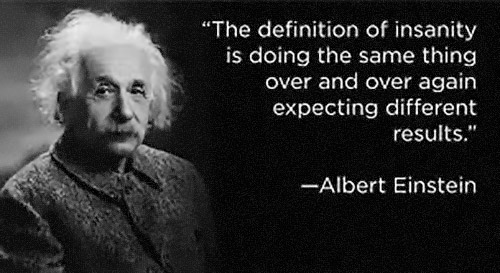| SHARE THIS ARTICLE ON SOCIAL |
| Marketing Insights - | Reading Time: 12mins |
Optimising Bancassurance is easier said than done
Avoiding the 8 pitfalls of Bancassurance

Bancassurance is one of the most promising channels for the profitability of banks and insurance companies around the world. But there are some common pitfalls that management consistently face – and fail to conquer – when optimising Bancassurance businesses.
Achieving excellence is far from easy and, after more than four decades, Bancassurance businesses are still not living up to their potential. The best practices to create success are (apparently) well understood and some organisations are succeeding in some areas, but not consistently enough. So why are the abundant opportunities to optimise Bancassurance business being missed every day?
In no particular order, here are 8 of the common pitfalls:
Common Pitfall 1: Relying only on KPIs can encourage unwelcome behaviours
KPIs must reflect the financial needs of the business, of course, but they can drive sales behaviours that are not always customer centric while also missing the opportunity to encourage a team approach.
Oftentimes, Bank Managers and bank staff can achieve targets and receive rewards without selling insurance or achieving that component of the KPI (commonly seen when the insurance KPIs are lost within “Fee Income”).
KPIs also often fail to motivate salespeople because they rarely reflect the effort that was involved in meeting them. Overcomplicated incentives with lengthy timeframes can lead to salespeople losing interest in them; they seem unachievable or out of touch due to the length of time it takes to deliver them.
Introduce new ways to motivate staff more deeply.
Obviously, Bancassurance KPIs are important. They should demonstrate that they improve sales performance, they should be frequently updated, visible and fair, and should achieve the desired balance between quality and quantity of sales. With that said, relying only on KPIs to motivate sales teams can encourage an ‘incentive culture’ which often promotes unwanted behaviours.
Organisations who can introduce new ways to motivate staff can successfully strike a healthy balance between achievement, sales incentives and commitment to a positive culture. For example, Bancassurers should:
- Balance compensation and benefits of salespeople to drive the right behaviours
- Create inter-dependencies between team members
- Teach Insurance salespeople how to properly integrate into Branch Teams
- Create Communication Forums and processes that encourage involvement and innovation
- Achieve a good balance between individual and team KPIs and incentives.
Common Pitfall 2: Bancassurers are managing numbers instead of managing people
The way many sales managers work now can be likened to following a game of football by just looking at the scoreboard: they can tell you the result, but they have no idea how they got there, who were the stars and who in the team should be recognised.
In short, performance data provides a starting point, not an end game.
In many organisations, sales managers and leaders do not understand or embrace the principles of activity management. Often, they have not had specific training and aren’t properly equipped to help salespeople improve productivity through feedback, coaching and role play.
Salespeople need to be led by fully trained sales leaders who can ensure consistent and professional development of everyone in the team, whether they are insurance or bank staff. Leaders must be, by definition, people who can motivate and inspire their people to improve and develop, think outside the box and assist each other.
The following areas are critical to a Bancassurance business:
- Develop and deliver training that allows managers to lead their salespeople by example, rather than focusing only on the numbers.
- Implement activity management tools and processes that underpin each individual’s activity as well as the overall business performance.
- Remember that your best salespeople can be your worst sales managers. Find a different way to reward them rather than promote them into unhappiness and, in the process, lose an exceptional
- salesperson.
Common Pitfall 3: Trusting inadequate management information
If managers are provided with management information, how relevant is it to their actual operation? How many managers in your organisation really know how to read the story behind the management data dashboards?
Use data insights to make distribution teams more productive.
In many Bancassurance organisations, management information is poor quality, not timely, out of date, irrelevant, over-the-top, and can therefore be unusable.
If your organisation is not using data to measure, monitor, course-correct and encourage success from sales teams, then you’re losing ground on competitors who are using data insights to make their distribution teams more productive.
Is it essential to:
- Establish the data that is really needed and present it using automation in a timely and useful style.
- Train managers to understand how to use data to achieve the best outcomes and to develop their people in the areas where they need support.
Common Pitfall 4: Few understand effective learning online
Covid-19 has forced people to work from home and maintain physical distancing. Consequently, managers have needed to make quick decisions around critical strategic issues, like the future of training. Salespeople and managers have come and gone during 2020, and skill sets of remaining staff can erode if recurrent training and coaching is not delivered. In the new world environment, people need to be trained to be effective.
This new normal has expedited the shift towards eLearning in Bancassurers, but few have fully understood what factors drive effective learning online. Understanding this is the key to optimising Bancassurance business.
Whilst organisations see the need to develop digital solutions for training, it is not effective unless the content is of the highest standard possible. Many are developing the systems but seem to struggle with the content, especially in Bancassurance where such little skills-training exists other than sales process or product and technical training.
Effective online learning is the key to Bancassurance optimisation.
- Effective Learning online is not achieved by taking conventional face-to-face training material (especially Agency training material) and making it available through eLearning modules.
- Effective Learning online is achieved by taking great content and using it to create a blended learning journey that motivates the delegate to learn and restudy before being assessed to evaluate the effectiveness of their learning.
- The learning journey needs to be tracked and monitored and so now more than ever an efficient Learning Management System (LMS) needs to underpin online learning.
 |
Blended learning content utilises these elements as well as automated characters, real actors, virtual meeting rooms, eLearning and virtual assessment centres to ‘blend’ the programmes into fun and relevant short sessions. These sessions can be safely completed using smart phones, tablets, laptops or desktops and, importantly, can be tracked by a world beating Learning Management System.
Content costs less than the value of one additional sale per person trained*
An important final point is that digitised blended learning saves the cost of travel, hotel, training rooms and facilitators. After an initial investment to design and develop the content, it becomes very cost-effective to deliver. If content is developed externally then license fees would be the normal way to fund those costs which (*on a per capita basis) could cost less than the value of one additional sale per person trained.
 |
Common Pitfall 5: Inconsistent articulation of training
Training quality decreases as its physically delivered across a widely distributed sales force. It is literally diluted by each new round of Train the Trainer. The corporate trainers are trained by the developers and designers. They in turn train the regional trainers, who train the district trainers, who train the coaches in the field. The result, especially in large organisations, is that at the end of the process the training bears little resemblance to the original.
Digitised blended training removes dilution and ensures consistency.
- Digitised blended training ensures that everyone in the organisation receives the same high-quality level of training with the desired outcome of a consistent increase in sales and quality.
Common Pitfall 6: Change for changes sake
When organisations appoint new Learning & Development Managers, these people tend to want to create change to demonstrate their added value. Quite often they fall back on their previous materials with which they are familiar and introduce changes to the content and the way learning is delivered. The impetus for change in this situation reflects the personal ambitions of the Training Director and not necessarily the success of the current training system.
This change for changes sake often leads to excellent training being ditched and being replaced by poorer quality materials, even if the existing content is gaining traction and transforming sales skills.
A digitised training system will reduce the chances of this happening as:
- The costs of replacing digitised quality training can be prohibitive and undesirable.
- Data insights about learners, provided by an integrated Learning Management System, would prove the evidence that the material is working.
- Any changes would obviously attract a higher level of organisational scrutiny.
Common Pitfall 7: Allowing compliance and regulations to quash learning engagement
The wind of regulatory change has blown through many of the mature Bancassurance markets, bringing improved customer protection, greater professionalism, and increased transparency. Over time, principle-based regulation will further shape the Bancassurance industry in less mature markets across the world, and rightly so.
But allowing key regulatory obligations to be the driver of Bancassurance training content and outcomes quashes the learners’ engagement and diminishes their motivation. Generally, regulatory training requirements are dry and the process of learning feels more like a box-ticking exercise than an entertaining and enlightening learning experience.
Regulation and compliance can be allies to enhance the skills of salespeople.
- Organisations should view compliance and regulations as their ally and actively use them to enhance the core skills of their salespeople.
- They can do this by integrating the principles within engaging content that develops higher quality skillsets and reflects customer centricity; something desired by many Bancassurance organisations but rarely achieved.
Being ‘regulation ready’ and integrating industry and marketing compliance requirements into optimised training materials – even if you’re operating in an unregulated market – will provide security that the training material remains robust in a new regulatory environment and allows the business to stay well ahead of its competitors.
Common Pitfall 8: Unresolved issues around sales relationships
In many organisations, the importance of the involvement of everyone in generating insurance sales opportunities is underplayed or rarely reaffirmed by bank senior management. This can lead to an obvious disconnect where there is no mutual trust or respect between sales teams and business units. Indeed, it has been acknowledged by some that Bank Relationship Managers and Insurance salespeople are actively discouraged to operate as a cohesive team with joint responsibilities and KPIs, and this is a real opportunity missed.
Lead Generation activity is also not always considered a priority and it can be that it is not rewarded, encouraged, measured or trained. Since this is the source of all insurance and many core banking business opportunities, it has obvious negative consequences.
For many years, leads have been created by using data and, generally, salespeople have failed to display the skills needed to convert these into virtual meetings and discussions. They simply have not been trained in conversational selling and so the customer is rarely made aware of the benefits of a real or virtual meeting. This has led Bank Relationship Managers to rely on the top 10% of customers in their portfolio – even asking them to buy to help them achieve their targets – while the other 90% of customers remain largely ignored.
When searching for solutions, there is one simple place to start.
There are multiple and human factors at play in any sales environment and not all are covered here. In short, finding the funds and the appetite to implement new ways of upskilling salespeople is the simple place to start. Digitised blended learning journeys for your salespeople can:
- Include key elements to appeal to all learning styles and content consumption preferences.
- Target the training content to specific needs like lead generation skills for banking staff and sales skills for insurance staff.
- Deliver sales manager and sales leadership training that arms them with the soft skills and the tools and solutions to deal with every opportunity and contingency.
- Provide the benefits of conversational selling training; a more productive skill for the digital sales environment of today.
The optimisation of Bancassurers lies in digitisation
Reviewing these pitfalls has prompted Ian Watts, CEO of InPartnership International (iPi), to ponder the current Bancassurance landscape. “The best practices to create success are well-understood but often fail owing to poor execution” Watts said. “Just consider the number of past Bancassurance ventures that should have flourished but have consistently underperformed. When opportunities like those above are still being missed by organisations, it highlights why the road to an optimised Bancassurance partnership is strewn with problems.”
Collaborative agreements and hybrid strategies are essential for accessing local distribution networks, and Bancassurance is certainly paving the way. This is no more apparent than in the ASEAN region where various exclusive agreements have recently been agreed. There, industry players also now realise that digitising processes and training is also essential to a smoothly functioning Bancassurance operation in the future.
In pursuit of this, many of Asia’s Bancassurers have been spending 1-2% of their gross premiums annually on digital projects (in addition to general IT spending) and this is expected to increase in the future more strategically.
Digital training solutions increase consistency and reduce costs.
“Never more than now do Bancassurers worldwide need to ensure that training becomes a digitisation priority” declared Rod Shay, a strategist with more than 40-years-experience and knowledge of developing and implementing successful Bancassurance businesses.
This is particularly relevant in 2021 as Covid-19 has driven people away from classrooms and skill sets are being eroded as a result. “The virus has compounded the rationale for Bancassurers to train their staff using digital solutions. Digitised training programs should help increase consistency, avoid quality dilution and reduce costs. And the content needs to be easily accessible, interesting and fun. But training effectiveness is wholly dependent upon the quality of the content,” Shay continued.
Some Bancassurers believe that face-to-face can never be beaten as a sales and training practice and live in hope that it will return, even in the face of reducing persistency ratios.
Others are realising how digitised blended learning and conversational selling can bring new solutions to old problems.
What’s clear is that if organisations fail to address common pitfalls like those included above, they will fail to fully optimise their Bancassurance business.
—
IPI Global Learning LMS supports learning methods that are appropriate for the current generation. Our content is designed with a ‘Digital First’ approach.
If you found this article helpful and informative, please feel free to share it with your associates.
| SHARE THIS ARTICLE |
Article Author
 Rod Shay |
AA
Find out more
Whether you’re an individual looking for a training course to upgrade your skills or a company in need of an in-depth consultancy to identify corporate pain points, iPi can help. Add your details below and iPi will make contact to discuss your requirements.
AA
CPD certified leadership and management courses
Upgrade your leadership and management knowledge by taking one of our interactive on-line courses.
Business management courses are a great way of refreshing the key skills you need to effectively manage teams. Receive professional recognition after completing the course.
CPD Certified Leadership and Management Courses

















